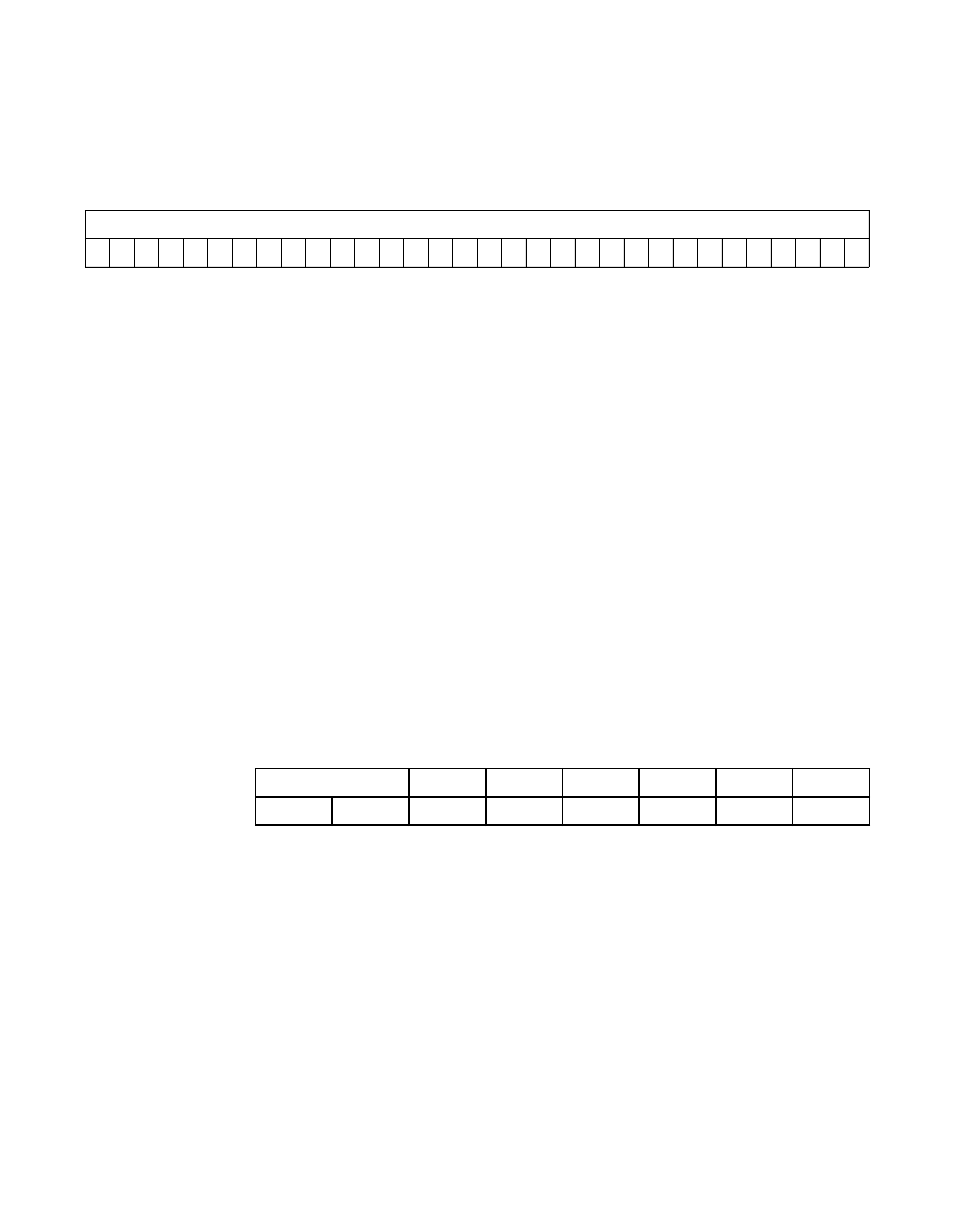Dma mode (dmode), Dma mode, Dmode) – Avago Technologies LSI8751D User Manual
Page 163: Mode (dmode), Scratch register a, Scratcha), Scratch register a (scratcha)

5-47
Registers: 0x34–0x37 (0xB4–0xB7)
Scratch Register A (SCRATCHA)
Read/Write
SCRATCHA
Scratch Register A
[31:0]
This is a general purpose, user-definable scratch pad
register. Apart from CPU access, only Register
Read/Write and Memory Moves into the SCRATCH
register alter its contents. The LSI53C875 cannot fetch
SCRIPTS instructions from this location. When bit 3 in
the
register is set, this register
contains the memory-mapped base address of the
operating registers. Setting
bit 3
only causes the base address to appear in this register.
Any information that was previously in the register
remains intact. Any writes to this register while
bit 3 is set passes through to the actual
register. The power-up
value of this register is indeterminate.
Register: 0x38 (0xB8)
DMA Mode (DMODE)
Read/Write
BL[1:0]
Burst Length
[7:6]
These bits control the maximum number of transfers
performed per bus ownership, regardless of whether the
transfers are back-to-back, burst, or a combination of
both. The LSI53C875 asserts the Bus Request (REQ/)
output when the DMA FIFO can accommodate a transfer
of at least one burst size of data. Bus Request (REQ/) is
also asserted during start-of-transfer and end-of-transfer
cleanup and alignment, even if less than a full burst of
transfers is performed. The LSI53C875 inserts a “fairness
delay” of four CLKs between burst length transfers (as
31
0
SCRATCHA
x
x
x
x
x
x
x
x
x
x
x
x
x
x
x
x
x
x
x
x
x
x
x
x
x
x
x
x
x
x
x
x
7
6
5
4
3
2
1
0
BL[1:0]
SIOM
DIOM
ERL
ERMP
BOF
MAN
0
0
0
0
0
0
0
0